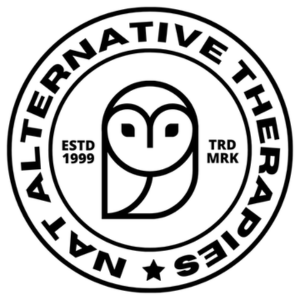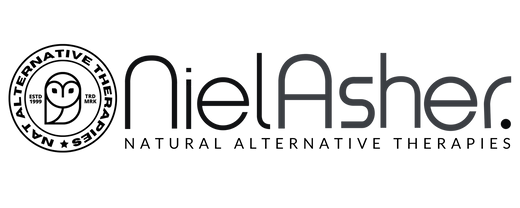How to safely Treat Neck Pain and Stiffness

About Static Cupping
Static cupping, also known as fire cupping or vacuum cupping, is a traditional healing practice that involves placing glass, plastic, or bamboo cups on the skin to create a suction effect. The cups are first heated with fire or a special pump to create a vacuum, and then placed on the skin. The suction created by the cups is thought to increase blood flow and promote healing.
Static cupping is often used to relieve muscle tension, reduce pain, and improve circulation. The cups can be placed on various parts of the body, including the back, shoulders, and legs. Some people also use static cupping for respiratory conditions, such as coughs and asthma, as well as digestive issues and skin problems.
About Static Cupping
Static cupping, also known as fire cupping or vacuum cupping, is a traditional healing practice that involves placing glass, plastic, or bamboo cups on the skin to create a suction effect. The cups are first heated with fire or a special pump to create a vacuum, and then placed on the skin. The suction created by the cups is thought to increase blood flow and promote healing.
Static cupping is often used to relieve muscle tension, reduce pain, and improve circulation. The cups can be placed on various parts of the body, including the back, shoulders, and legs. Some people also use static cupping for respiratory conditions, such as coughs and asthma, as well as digestive issues and skin problems.
During a static cupping session, the cups are typically left on the skin for several minutes, allowing the suction to draw blood and other fluids to the surface. The cups are then removed, and the area may be massaged to further promote blood flow and relaxation.
While static cupping has been used for centuries in traditional medicine, there is limited scientific evidence to support its effectiveness. However, many people find static cupping to be a relaxing and therapeutic practice, and some studies have suggested that it may have benefits for certain conditions, such as chronic neck pain and fibromyalgia.
It is important to note that static cupping should only be performed by a trained and licensed practitioner, as improper use of the cups can lead to injury or infection. Additionally, it may not be suitable for everyone, especially individuals with certain medical conditions or who are taking certain medications.
In conclusion, static cupping is a traditional healing practice that involves placing cups on the skin to create a suction effect. While its effectiveness is not well-established by scientific research, many people find it to be a relaxing and therapeutic practice for reducing muscle tension, pain, and promoting relaxation. If you are interested in trying static cupping, be sure to speak with a licensed practitioner to ensure it is safe and appropriate for your individual needs.
About Shoulder Pain
Shoulder pain is a common condition that can be caused by a variety of factors, including injury, overuse, or underlying medical conditions. The type and location of the pain can provide important clues as to the underlying cause of the problem. Here are some of the most common types of shoulder pain:
Rotator cuff pain: The rotator cuff is a group of muscles and tendons that surround the shoulder joint and help to stabilize and move the shoulder. Pain in the rotator cuff area can be caused by inflammation, strain, or tears in the muscles or tendons.
Shoulder impingement: Shoulder impingement occurs when the tendons or bursae in the shoulder become compressed or pinched, causing pain and discomfort. This can be caused by repetitive overhead movements, such as those performed by athletes, painters, or construction workers.
Frozen shoulder: Frozen shoulder, also known as adhesive capsulitis, is a condition in which the shoulder joint becomes stiff and painful. This can be caused by injury, overuse, or underlying medical conditions such as diabetes.
Shoulder arthritis: Arthritis is a condition in which the joints become inflamed and painful. Shoulder arthritis can be caused by wear and tear, injury, or underlying medical conditions such as rheumatoid arthritis.
Bursitis: Bursitis is inflammation of the bursae, small fluid-filled sacs that cushion the joints. Shoulder bursitis can be caused by overuse, injury, or underlying medical conditions.
Shoulder instability: Shoulder instability occurs when the shoulder joint is loose or dislocated, causing pain, weakness, and a feeling of instability. This can be caused by injury or underlying medical conditions.
In most cases, shoulder pain is a result of tight and tired muscles, often with knots or trigger points. This type of shoulder pain may be best suited for cupping as shown in the video above.
Whilst cupping cannot be used to address the causes of the more chronic shoulder pain conditions listed above, it may be helpful in addressing some of the symptoms - although always with the agreement of your physician or medical care team.
If you are experiencing shoulder pain, it is important to speak with a healthcare professional to determine the underlying cause of the problem and develop an appropriate treatment plan. Treatment may include rest, physical therapy, medications, or in some more rare cases, surgery.
About Neck Pain
Neck pain is a common condition that can be caused by a variety of factors, including injury, poor posture, or underlying medical conditions. The type and location of the pain can provide important clues as to the underlying cause of the problem. Here are some of the most common types of neck pain:
-
Muscle strain: Muscle strain is a common cause of neck pain, and can be caused by overuse, poor posture, or injury. Strained muscles can cause a dull or achy pain in the neck and upper back.
-
Cervical spondylosis: Cervical spondylosis is a condition in which the discs in the neck begin to wear down, causing pain and discomfort. This can be caused by age-related degeneration, injury, or underlying medical conditions.
-
Cervical radiculopathy: Cervical radiculopathy is a condition in which a nerve in the neck becomes pinched or compressed, causing pain, numbness, or weakness in the neck and upper extremities.
-
Whiplash: Whiplash is a type of neck injury that occurs when the head is quickly jerked back and forth, causing strain or sprain to the neck muscles and ligaments. This is often associated with motor vehicle accidents.
-
Pinched nerve: A pinched nerve in the neck can cause sharp or shooting pain, tingling, or numbness in the neck, shoulder, arm, or hand. This can be caused by injury, poor posture, or underlying medical conditions.
-
Torticollis: Torticollis, also known as wry neck, is a condition in which the head is tilted to one side and the neck is twisted, causing pain and stiffness. This can be caused by injury, muscle spasms, or underlying medical conditions.
If you are experiencing neck pain, it is important to speak with a healthcare professional to determine the underlying cause of the problem and develop an appropriate treatment plan. Treatment may include rest, physical therapy, medications, or in some cases, surgery.
Maintaining good posture, taking frequent breaks during extended periods of sitting, and staying physically active can help prevent neck pain.
Dr Joi Edwards PhD PT
Dr Joi Edwards is a physical therapist and massage therapist with extensive experience in orthopedics and manual therapy. She is an accomplished writer who regularly contributes articles in the media covering health and wellness matters.
As an educator, Dr Joi is known for empowering therapists with her highly entertaining and engaging style of teaching.
More articles about Neck Pain and Stiffness
Certify as a Trigger Point Therapist

The Gold Standard in Continuing Education and Online Training
Massage Therapy, Sports Massage, Strength and Conditioning, Stretching, Mobilisation and Manipulation, Cranio-Sacral Therapy, IMS Dry Needling, Acupuncture, Acupressure, Trigger Point Therapy, IASTM, Resistance Training, Bowen Therapy, Vestibular Rehabilitation Therapy, Podiatry, Oncology Massage, Sports Nutrition, Traditional Chinese Medicine, Somatic Therapy, Prenatal Bodywork and Massage, Anatomy, Biomechanics, Clinical Reasoning, Pilates, and Yoga.



















